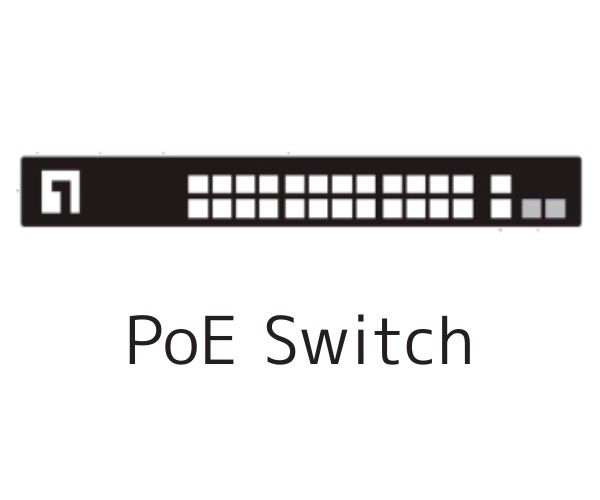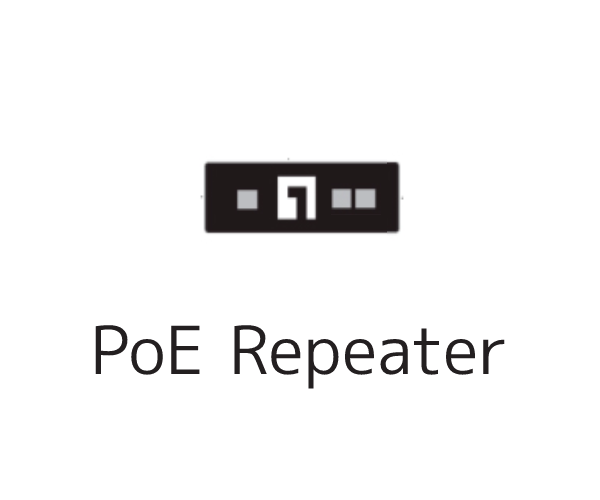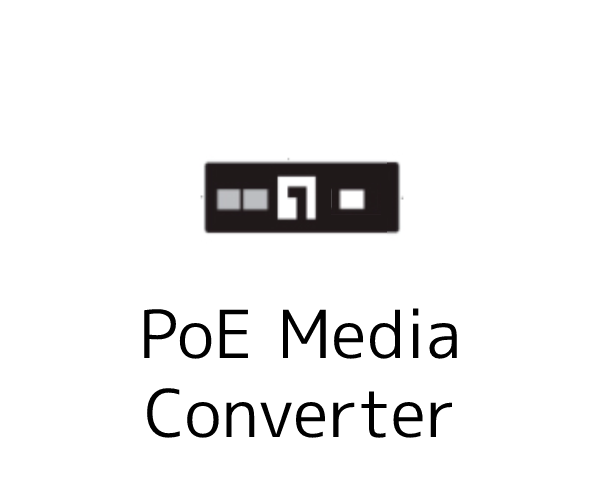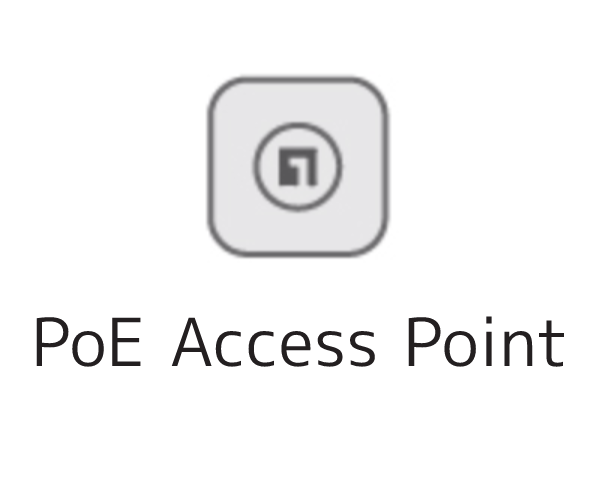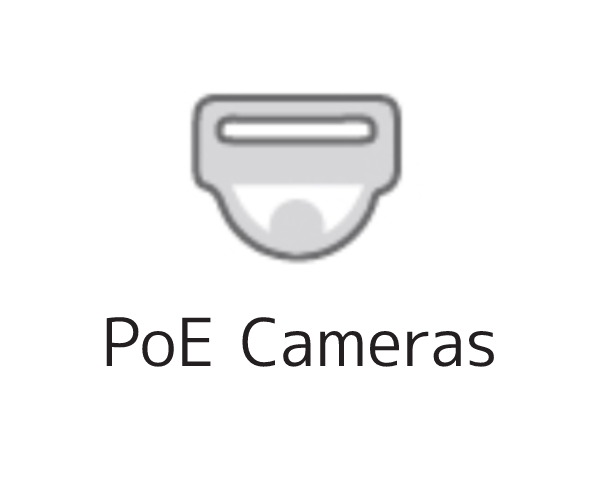
What is Power over Ethernet?

Power over Ethernet, or PoE, is a technology which provides data and power to Ethernet-enabled local area networking (LAN) devices over existing wiring. This eliminates the need for a separate power supply. Ethernet-based LANs are standardised technologies defined by the Institute of Electrical and Electronics Engineers (IEEE) in Working Group 802. This is also how the names of Ethernet standards are derived, such as IEEE802.3af for PoE.
The PoE standard was developed by the IEEE in 2003, after the first proprietary solutions were already on the market and problems arose due to different implementations. With Fast Ethernet, only 4 of the 8 wires in an Ethernet cable are used for data transmission, so some manufacturers used these free wires for power. The first IP cameras and WLAN access points used these proprietary solutions. Some of these are still in use today, so when modernising such systems, it is important to take stock of the situation, as these non-standard devices will not work, and even new client devices can be destroyed by old proprietary injectors.
The standard used today and defined by the IEEE ensures that injectors and client devices can be combined with each other across manufacturers with guaranteed compatibility, for example through the defined pin assignment. This makes component selection much easier.
Today, PoE technology is not only used in the corporate environment but is also becoming increasingly popular in the home. In the smart home, for example, power cables for actuators or sensors can be saved and the often-cheaper Ethernet cable can be used directly.

How does PoE work?
In order for PoE client devices to work, electrical power must be carried along with the data over the Ethernet cable. This is possible with Ethernet data because the direct current used by PoE does not interact with the data signals. The power is injected into the cable by the power sourcing equipment (PSE). This is why the term PoE injector is used for PoE PSE power supply components, such as our POI-3000. Such PSE support both conventional power supply via unused data cables and so-called phantom power for Gigabit Ethernet, where data and power are carried on the same cables. All requirements for use are met if the client device is PoE-compatible, a so-called powered device (PD). If a non-PoE device is connected, it will not be supplied with power thanks to a detection system to prevent possible damage.
 This detection is carried out in 4 stages, as you can see from the table on the right. But there are also solutions for non-PoE devices in the form of PoE splitters, such as our POS-3000, which separates the data signal from the power and supplies power to the end device via a separate DC connection. This allows almost any non-PoE device to be used in a PoE powered installation.
This detection is carried out in 4 stages, as you can see from the table on the right. But there are also solutions for non-PoE devices in the form of PoE splitters, such as our POS-3000, which separates the data signal from the power and supplies power to the end device via a separate DC connection. This allows almost any non-PoE device to be used in a PoE powered installation.
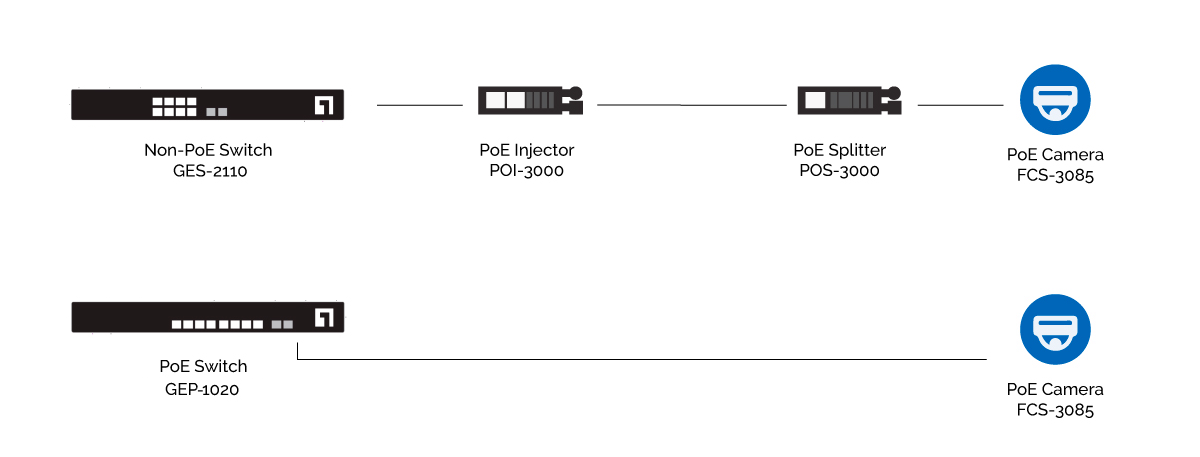
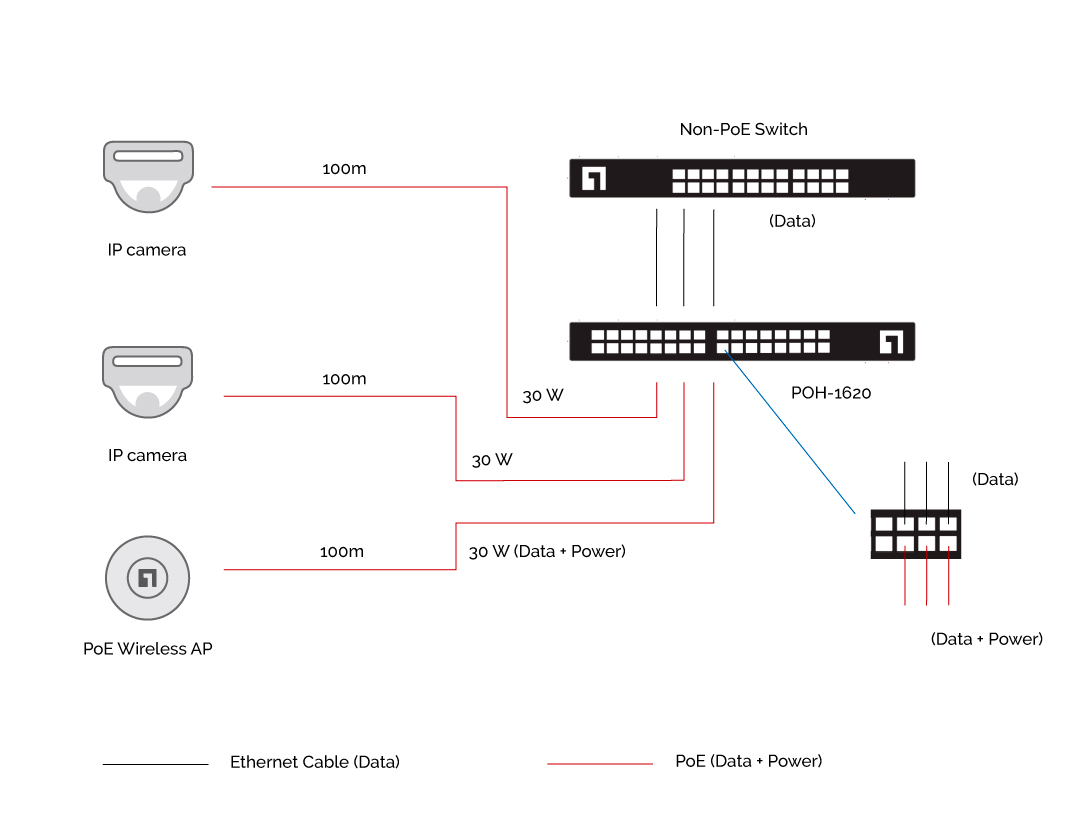
What devices use PoE?
The PoE standard IEEE802.3af, established in 2003 and colloquially known as PoE, was designed to provide sufficient power for devices such as IP surveillance cameras and single-band WiFi access points. In figures, this means 15.4W gross electrical power. Of this, the PoE-PD is allowed to use 12.95W due to unavoidable losses during power transmission in the Ethernet cable. Over time, however, it has become apparent that this is not sufficient for modern dual-band access points, for example. As a result, proprietary solutions began to appear on the market, again threatening Ethernet interoperability.

As a result, the IEEE published the next PoE standard, IEEE802.3at, in 2008. This is colloquially known as PoE plus or PoE+. This increased the gross power to 30W and the PD budget to 25.5W. This meant that not only could the aforementioned dual-band access points, which typically require around 17W, be supported, but for the first time IP cameras with additional features such as motorised movement or a heater for winter could be operated without a separate power supply.
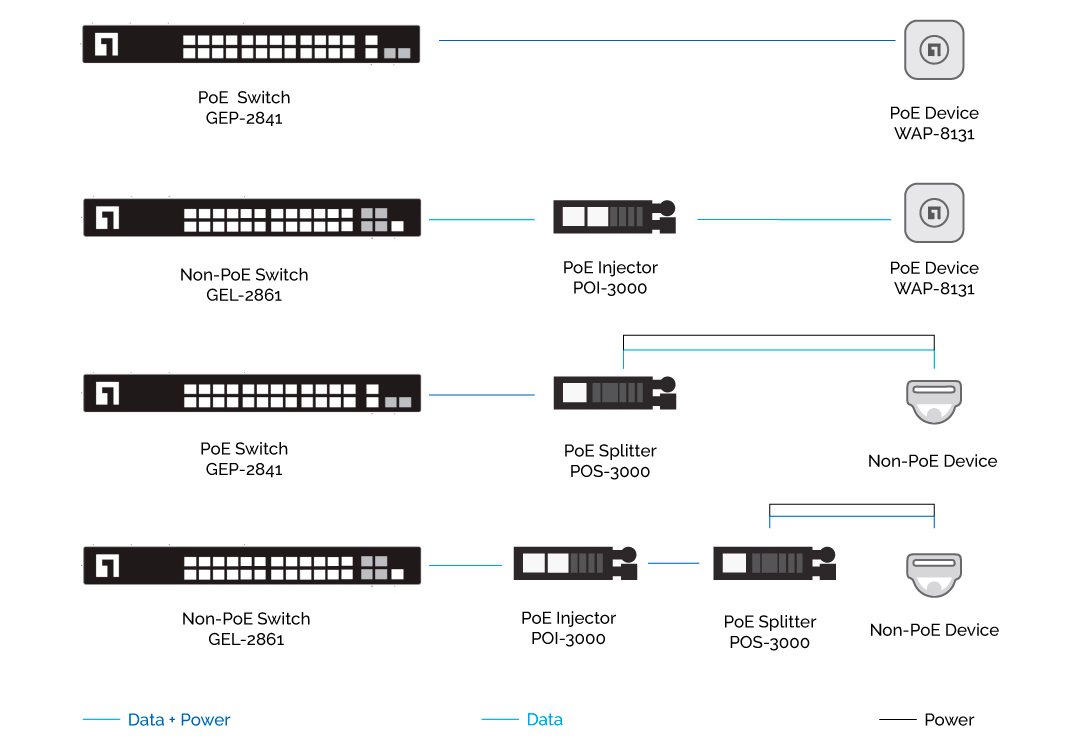
As development continues and new scenarios for the use of PoE technology emerge, the IEEE has already set the next PoE standard for 2018: IEEE802.3bt. Here too, a colloquial term has quickly become established in the form of Four-Pair-PoE, 4PPoE or PoE++. In this case, all 8 wires of the Ethernet cable are used simultaneously for power supply and data transmission. This means that a Cat.6/Category 6 Ethernet cable is still perfectly adequate and safe for the transmission of the higher powers, while Cat.6A or higher cabling is only required if speeds of 2.5 Gigabit or higher need to be used.
For the first time, two gross power ratings have been defined, 60W and 90W as the maximum power budget. Our POI-5002W60 and POI-5003 injectors meet these specifications exactly, while currently available switches such as the GEP-2841 support a maximum of 60W per PoE++ port. The data rate remains at 1 Gigabit. However, higher speeds are easily achievable as the data rate is not correlated to the power supply.
Advantages of PoE
- Simpler and more flexible installation, as only one data cable needs to be installed.
- Easy implementation of centralised uninterruptible power supply
- Increased energy efficiency as only one power supply is used instead of many individual ones
- Improved safety through built-in protection mechanisms such as surge protection
- Cost savings by continuing to use older installations and lower cable quality requirements
- Reduced maintenance through automatic health monitoring of PoE devices
- Backward compatibility, IEEE802.3bt compatible to at compatible to af
Disadvantages of PoE
- Individual components more expensive to purchase than non-PoE devices
- Length restriction of 100m (330ft) can only be overcome by using additional components, such as the PoE repeater POR-0101
- Power limited to 15W, 30W or 90W depending on the underlying standard
- Not upward compatible, an at PD cannot be used with an af PSE, even if it consumes less than 12W
- Non-standard manufacturer's solutions may cause damage to standard compliant Ethernet devices
- Poorly secured PoE installations facilitate unauthorised access to the network
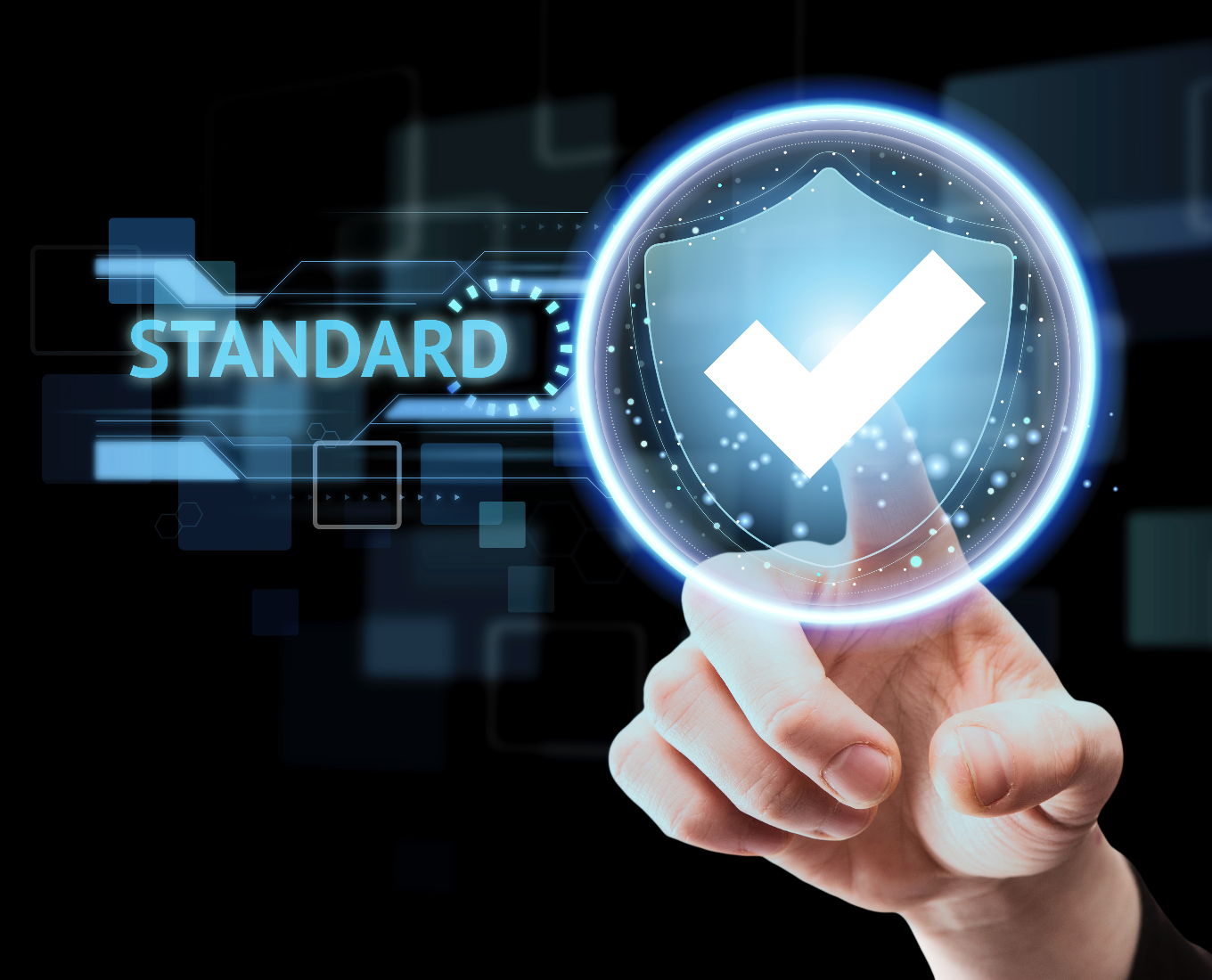
We love standards!
All our PoE PSE and PoE PD devices comply with IEEE standards. This applies to both the PoE implementation and the data transmission. This means that the use of our components with any other standard compliant device on the market is not only possible but guaranteed.
Last but not least we would like to give you an overview of our PoE portfolio:




